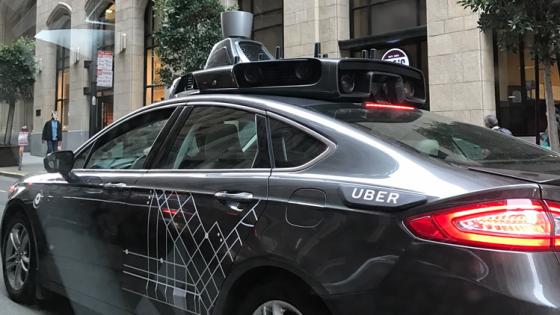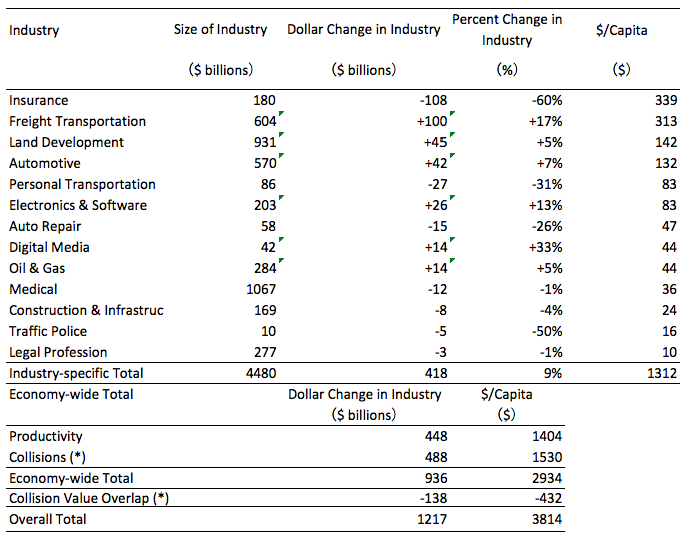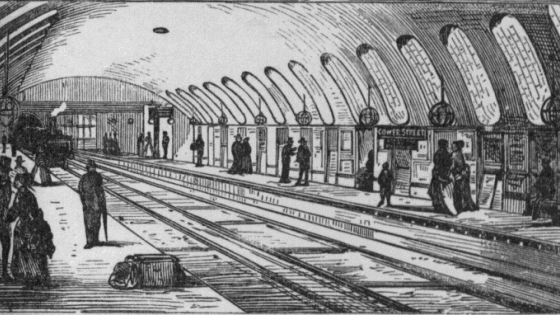Due partly to the recent boom in artificial intelligence (AI), there are growing expectations that fully autonomous driving may become a reality in the near future. However, even if that may be the case technically, many believe that soft factors such as laws and regulations pose an overwhelming obstacle.1
What is ‘automated driving’? The Society of Automotive Engineers International’s new standard2 – an internationally recognised standard – identifies six different levels of driving automation from Level 0 to Level 5. Ordinary cars with no automated driving functions fall under Level 0, whereas fully automated vehicles in which the automated driving system performs the entire dynamic driving task (DDT) without any constraints are categorised as Level 5.
The level of driving automation in cars currently available on the market is either Level 1, in which stand-alone functions (such as automatic parking systems) assist human drivers, or Level 2, in which a combination of advanced functions perform part of the dynamic driving task. Such driver assistance functions belong to an early stage of driving automation. Today, automotive makers are competing to advance beyond that stage and develop Level 3 or 4 technologies for the realisation of full-fledged automated driving.3
Automotive makers competing fiercely in technology development and government initiatives
At present, Daimler AG (Mercedes-Benz) is considered the top runner among the world’s automotive makers in the development of automated driving technologies currently installed in vehicles on the market. Its new Drive Pilot system allows the driver not only to keep in the same lane, maintain a safe trailing distance, and follow the car in front and stop when necessary while in congestion, but also to assist with steering, switch lanes, and overtake when the driver signals a lane change.[4] Tesla’s Auto Pilot system installed on its flagship models also features a similar set of autonomous driving functions.
Turning to Japan, Nissan Motor Corporation has been the keenest to develop autonomous driving technologies, marketing some models installed with an autonomous driving system called ProPILOT, which features keep-the-lane and keep-the-distance functions for highway driving and follow-and-stop functions for driving in congestion. Meanwhile, Subaru Corporation has earned a degree of recognition for its EyeSight – an emergency braking system to help avoid or reduce front end crash damage as well as keep-the-lane and keep-the distance functions – installed on a series of its flagship models. Major Japanese automakers are working toward an almost identical goal – namely, making Level 3 autonomous vehicles hit the roads in 2020 – by actively seeking partners from non-automotive industries such as information technology (IT) companies to accelerate efforts.
Relevant government agencies have been taking various steps toward the realization of autonomous driving. The Public-Private Intelligent Transport Systems (ITS) Initiative/Roadmaps 2017, a government-wide programme adopted by the Strategic Headquarters for the Advance Information and Telecommunications Network Society (IT Strategic Headquarters), has set the explicit goal of realising Level 3 or higher autonomous driving on highways from 2020 onward and calls for developing necessary rules, regulations, and policies toward achieving that end.[5] Concerned parties from both the public and private sectors are also joining forces to test autonomous vehicles, such as the large-scale highway testing of autonomous vehicles and the testing of remote-controllable pilotless vehicles on public roads within designated areas.
Economic effects of autonomous vehicles
When autonomous driving becomes a reality, what effects will it have on our economy and society? Some people say it will bring fundamental changes. In the US, a series of organisations in both business and academic spheres have estimated the economic effects of autonomous vehicles.
According to an estimate by Intel Corporation and Strategy Analytics, announced in June 2017, the economic effects of autonomous vehicles will total $7 trillion in 2050 (Figure 1). The dollar amount represents a newly created value or a new ‘passenger economy’, calculated based on the assumption that fully automated Level 5 vehicles will be on the roads by 2050.
They also assumed that consumers and businesses will use Mobility-as-a-Service (MaaS) offerings instead of owning cars, and those who had been commuting to work by car will become passengers and spend the commuting time doing something else. Furthermore, transportation companies suffering from a serious labour shortage – such as long-haul truck operators and home delivery service providers – will introduce autonomous driving services, thereby enabling them to change their business models drastically. As such, the estimate reflects a very broad range of potential effects, which also include a wide variety of new commercial services such as onboard dining and retailing.
Figure 1 Global service revenue generated by autonomous driving in 2050 (US$ millions)
Source: Strategy Analytics (2017).
Researchers in the sphere of academia have also conducted a series of detailed studies. Clements and Kockelman (2017) estimated the economic effects of fully autonomous vehicles in the US, measured in terms of net economic benefits to society, to provide a comprehensive view by integrating findings from multiple studies and, using additional data, to generate estimates of industry-wide effects (Table).
The most affected is the automotive industry. The authors estimate that although the penetration of car-sharing services may reduce private car ownership dramatically, the overall automotive market will likely expand as the vehicle distance travelled (VDT) increases in a broad scope of users – elderly people, persons with disabilities, and so on – who are enabled by autonomous driving to enjoy the convenience of automobiles without physically driving them. The trucking and freight industry will be among the earliest adopters of automotive driving as companies seek to improve transport efficiency. Autonomous driving systems will free drivers from the task of driving, and eventually many driver jobs will be eliminated when such systems become a reality.[6] This will enable trucking companies to transport larger quantities of freight at lower costs, resulting in an increase in economic benefits.
The realisation of autonomous driving will dramatically reduce the number of car crashes caused by human error, which is responsible for over 90% of car accidents, eliminating the need for auto insurance policies. Demand for car repair services, medical services, and traffic police will decrease, too.
As for economy-wide effects, the number of car accidents – which account for 25% of traffic congestion – will decrease significantly when autonomous driving becomes the norm. Improved efficiency in the use of roadways translates into increased roadway capacity, and it is estimated that this would result in approximately $488 billion of cost savings through a reduction in injuries and deaths caused by car collisions. The penetration of autonomous vehicles would reduce unproductive hours Americans spend driving to work by 2.7 billion hours, enabling them to use the freed-up time working or doing other activities, thereby boosting overall driver productivity by $448 billion. The overall economic effects of autonomous vehicles, which combine both industry-specific and economy-wide effects, amount to more than $1.2 trillion, or $3,800 per capita.
Table 1 Summary of economic effects (industry- and economy-wide)
Notes: 1) In the columns headed “Dollar Change in Industry” and “Percent Change in Industry,” signs “+” and “-” respectively denote a gain and a loss for the industry, whereas the industry-specific total for the dollar change in industry is the sum of their absolute values. 2) Figures in the “$/Capita” columns and provided as overall total represent the sum of net economic benefits enjoyed by consumers.
Source: Clements and Kockelman (2017).
Need for a new economic and social design
As pointed out in various industry, academic, and government forums, there are a myriad of challenges and it will take quite some time to realise fully automated vehicles. Although significant technical progress has been made, it takes an accumulation of massive quantities of empirical data and learning processes to enable the development of AI capable of coping with fully automated vehicles. Even more formidable is the challenge of developing soft infrastructure, including laws and regulations setting rules for liability arising from accidents involving autonomous vehicles. In this regard, some point to the need for international coordination.
However, the advent of fully automated driverless vehicles will have a tremendous impact on our society, bringing fundamental changes to the entire economic and social systems. When new driverless transportation systems come into operation, they will become a major means of transport for elderly people in rural areas. In urban areas, the number of cars owned for personal use will drop sharply, eliminating congestion and the need for car parking spaces. People will be able to use car-sharing services wherever and whenever necessary. What sort of transportation system should we build when fully automated vehicles become the norm? How should we change urban landscape including land use and how should we redesign the economic and social systems? Based on various estimates made available on the economic effects of autonomous vehicles, Japan should engage in more active national-level discussion.
Editors’ note: This column was reproduced with permission from the Research Institute of Economy, Trade and Industry (RIETI).
References
Clements, L M and K M Kockelman (2017), “Economic Effects of Automated Vehicles,” Transportation Research Record: Journal of the Transportation Research Board 2606: 106-114.
Fagnant, D J and K Kockelman (2015), “Preparing a Nation for Autonomous Vehicles: Opportunities, Barriers and Policy Recommendations for Capitalizing on Self-driven Vehicles,” Transportation Research Part A 77: 167-181.
Strategy Analytics (2017), Accelerating the Future: The Economic Impact of the Emerging Passenger Economy, June.
Development Bank of Japan (2017), “Jido Unten Kaihatsu o Meguru Kokunaigai no Doko: Hokkaido ni okeru Jido Unten Gijutsu no Kaihatsu-Kyoten-ka o Kangaeru [Trends in the Development of Autonomous Driving Technologies in Japan and Overseas: A case of Hokkaido’s initiative to become a hub for developing autonomous driving technologies]” in DBJ Economic & Industrial Research Department’s Kongetsu no Topikkusu No. 265-18 (January 20, 2017).
Strategic Headquarters for the Advanced Information and Telecommunications Network Society (2017), “Public-Private ITS Initiative/Roadmap 2017: Toward the implementation of various highly automated driving systems in society”, trategic Conference for the Advancement of Utilizing Public and Private Sector Data, 30 May.
Managi, S (2016), “Social Challenges of Automated Driving: From the development of AI technology to the development of relevant rules,” RIETI, 26 July.
Endnotes
1. Concerning social issues associated with the introduction of autonomous driving, see Managi (2016). Development Bank of Japan (2017) provides detailed information on overall trends in the development of automotive driving technologies in Japan and across the world.
2. Based on definitions identified by the Society of Automotive Engineers International’s new standard J3016 effective from September 2016.
3. One example of Level 2 technologies is an adaptive cruise control (ACC) system that automatically adjusts the vehicle speed to maintain a set distance from cars ahead. In both Levels 3 and 4, an automated driving system performs the entire dynamic driving task within the designated operational design domain (ODD), with the difference being that the human driver is to take over when the system is unable to operate in the former, whereas no intervention by the human driver is necessary in the latter. For detailed definition, see Strategic Conference for the Advancement of Utilizing Public and Private Sector Data, Strategic Headquarters for the Advanced Information and Telecommunications Network Society (2017).
4. Refer to the websites of Mercedes-Benz, Tesla, Nissan, and Subaru, for automated driving systems installed in their respective models.
5. For details, see Strategic Conference for the Advancement of Utilizing Public and Private Sector Data, Strategic Headquarters for the Advanced Information and Telecommunications Network Society (2017).
6. Only a small number of drivers, who are retrained to become technical staff to monitor the operation of autonomous driving systems, would retain jobs. See Clements and Kockelman (2017).





